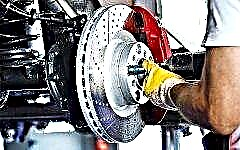
The content of the article:
- Organization of production at AvtoVAZ
- Measures taken and analysis of their effectiveness
The difficult economic situation is directly reflected in the production of automobiles. The flagship of the domestic auto industry, AvtoVAZ, is most acutely faced with a decline in purchasing power and overstocking. This is due to the orientation of products to the budget segment, in which competition is high as never before, and demand regularly falls. In view of this, the plant is forced to look for ways to reduce costs and ways of additional optimization.
Organization of production at AvtoVAZ

Over the past year, AvtoVAZ showed a net loss of 74 billion rubles, and this situation repeats from year to year. An enterprise that produces an average of about half a million cars can only show such disastrous results if production is monstrously ineffective.
Let's try to understand the reasons for this deplorable state of affairs.
At first glance, many leading manufacturers with a worldwide reputation can envy the production volumes of AvtoVAZ, but if we take into account the fact that the enterprise is loaded to less than half, it becomes clear that the cost of production will be extremely high.
Indeed, the design capacity of the head enterprise ranges from 800 to 900 thousand vehicles per year, but that's not all. Certain capacities were reserved for the production of vehicle kits for the Oka automobile assembly enterprises (and there were three such sites).

In addition, after joining the Renault-Nissan alliance, the Izhevsk Automobile Plant was included in the enterprise, the production capacity of which was 250 thousand cars per year and could be quickly increased without significant investments to 300 thousand. Thus, the total productivity of conveyors that AvtoVAZ needs to load exceeds 1 million 200 thousand vehicles per year. Any specialist understands perfectly well that the downtime of such capacities results in a large sum, which is shifted to the cost of marketable products, and the specific productivity of personnel will be extremely low.
The main obstacle faced by the company's management is the lack of the required number of models and platforms that would allow using all available assets. And if we dig deeper, we see a highly inefficient supply chain.
At the moment, VAZ is actively using the Grant / Kalina platform, on the basis of which the Datsun family is also being produced, that is, there is simply nowhere to expand the model range based on it, the proposed modifications are another matter, but we'll talk about that later.
At the same time, instead of maximizing the load on the existing line, adapted specifically to the baud of these families, the management of the plant decided to transfer Grant's car in the back of a liftback to Izhevsk. The Priora platform has already been practically discontinued, since it includes only a sedan modification.
As for the off-road vehicles, part of the production capacity is focused on providing the GM-AvtoVAZ conveyor, and the other on the production of the old generation Lada 4x4 (which is now being produced on the same line of the conveyor with the Priora).

The flagship of the Vesta enterprise is an example of the most ineffective organization of the production process, since the main part of the parts is produced at the head enterprise, the rest is purchased abroad, and the formed machine set is transported for assembly to Izhevsk. Thus, we actually see a partially loaded production with extremely irrational logistics and huge overhead costs, which is the broadest field for activities aimed at optimization.
As for cooperation with the Renault-Nissan alliance, the transfer of the B0 platform to AvtoVAZ was made with an eye to the release of numerous modifications based on it, which was implemented.
Within the framework of this cooperation, the following models are produced on the basis of B0:
- Renault Logan of the second generation;
- Lada Largus;
- Nissan Almera;
- Lada Xray.
In fact, on the same aggregate base, various cars are produced, focused on various target audiences, which can significantly reduce the cost and increase the load on the conveyor.
The main weak point of this direction is the extremely low level of localization, which makes cars quite expensive for the domestic Russian market and reduces the demand for them.
This disadvantage has become typical for traditionally domestic models, since the range of imported components in them is constantly growing.
The active use of foreign components and the expansion of their range to the detriment of domestic producers in the context of a low dollar exchange rate made it possible to significantly improve the quality of products with a slight increase in cost. Under the current conditions, imported parts have actually doubled in price, which immediately affected the cost of the final product, which at the selling price came close to budget foreign cars. All this led to another change of leadership and active attempts to find a way out of the current situation.
Measures taken and analysis of their effectiveness

The new head of AvtoVAZ, Nicolas Maure, sees the main direction of optimization in reducing costs and reducing the range of products. In his opinion, in the coming years it is advisable for the plant to keep the production of only two, maximum three platforms, which will further reduce the model range of the enterprise. They have set a very ambitious task - by 2017, to reduce the cost of purchased auto components by 20%.
In fact, this move involves a return to domestic manufacturers, many of which, after losing contacts with AvtoVAZ, have already ceased to exist, for example, OJSC AvtoVAZagregat. That is, now purchases will be forced to reorient not to the manufacturers proven over the years, but, possibly, to new ones or those that previously could not break through to the conveyor, which ultimately could lead to a collapse of an already low quality.
AvtoVAZ already faced a similar situation in 2003, and then the decision to purchase solely on the basis of a lower cost led to a sharp drop in quality and sales.
This approach is justified only for the cheapest models, for example, Grants. The management of the plant is well aware of this, since work in this direction is recognized as a priority and is aimed at gaining a certain share of the used car market.

As for the current staff cuts, the effect of these measures will be subtle and will only manifest in the short term. The problem is that at the moment the qualified engineering and technical personnel involved in the design work are subject to reduction.
Due to the lack of plans for the introduction of fundamentally new models in the near future, their reduction will not affect the performance of the enterprise. However, in the future, when the need for new developments becomes even more acute, AvtoVAZ will no longer have sufficient competencies to carry them out.
Hopes for the implementation of joint projects with Renault-Nissan are also not justified, since the concern already has a huge number of production sites, including in Russia, which must be loaded with its own models.It is the desire to at least partially use all the conveyor lines that explains such ineffective logistics of AvtoVAZ.
As for the dismissal of workers directly employed in production, this measure also has negative consequences in the long term. Sooner or later, the plant will face the need to restore production volumes, and this will entail the need for qualified employees, and the recruitment of new employees will be associated with significant costs for their education and training directly at the enterprise.
Until recently, this fact was understood by the management, since back in February of this year it was decided to switch to a four-day working week in order to maintain the number of employees. According to the then forecasts of the head of the Ministry of Labor, Maxim Topilin, this made it possible to avoid redundancies within six months.
Thus, we can observe typical signs of a management crisis: frequent changes in management, constant adjustments to production plans, the desire to achieve good performance in the shortest possible time, without regard to the short-term effect of such measures.
Naturally, all the problems could be solved at once by the sharply increased demand, but, unfortunately, in crisis conditions this is impossible.
Moreover, next year the total sales of new cars in Russia will not exceed 1 million 300 thousand copies, which is actually equal to the design capacity of AvtoVAZ and its related subdivisions.
Since the beginning of the 90s of the last century, the plant has been systematically losing market share, which was associated not only with the low quality and competitiveness of the products, but also with the narrow target audience of a number of models. Unfortunately, the current optimization activities only exacerbate the situation. In particular, the number of modifications is steadily decreasing, which in the short term allows you to reduce costs, but already in the medium term - leads to a drop in sales.

As an example of such a reduction in the range of models, one can cite the refusal to release Kalina in the sedan body, Priors in the bodies of a three- and five-door hatchback and station wagon, the abandonment of the hatchback and the freezing of plans for the release of the Vesta station wagon. They are trying to explain all this from the point of view of eliminating internal competition, which actually forces buyers to look for the model they are interested in from foreign manufacturers, since their cost is already comparable to the top models of AvtoVAZ.
If we take into account the fact that the foreign managers at the head of the company carry out systematic work in the interests of Renault-Nissan, giving large contracts for the supply of components to foreign companies, trying to support them in a crisis, then the optimization methods adopted now seem even more ineffective.
It is necessary to understand that purchases of foreign components were carried out even in conditions of the devaluation of the ruble to the detriment of Russian suppliers, who at that time could offer competitive products. Based on this, a number of experts formulated the basic principles aimed at increasing the real production efficiency:
- reduction of logistics costs due to the rational placement of models at production sites;
- expanding the range of manufactured modifications and, as a result, expanding the target audience (moreover, the release of modifications does not require significant investments);
- increasing the level of localization of all models;
- Consolidation of efforts on the release of new platforms and the loading of idle capacities.
As can be seen from the above list, the development of new models is a long-term issue, the resources for the implementation of which will be accumulated through the introduction of the first three points.
Thus, the program currently being implemented to optimize and increase production efficiency at AvtoVAZ is aimed at the earliest possible achievement of short-term results, in particular, reaching a break-even level by 2018. However, the consequences of these measures in the long term will lead to a decline in production culture and the loss of technological competencies.
WHA











